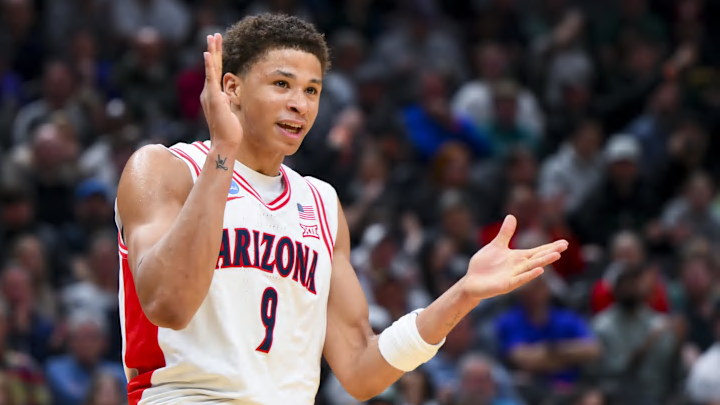The NBA Draft is a game of balancing upside and fit. The earlier a team selects, the more they should prioritize the best player available. You don't want to pull a Portland Trail Blazers by passing on Michael Jordan because you already have Clyde Drexler on your roster.
But the deeper you get into the draft, the more important finding the right fit becomes. Picking late in the lottery at pick No. 11, Portland's selection should combine both. They still need more star power, but they also have a future starting lineup that is beginning to emerge.
With the Blazers officially being too good to tank, they need to start thinking about how this selection fits into their long-term vision and newly established core. One area in particular they need to address is their forward depth.
4. Cedric Coward, Washington State
Cedric Coward may technically be listed as a shooting guard, but just look at the Oklahoma City Thunder in the Finals -- the NBA is positionless basketball. Coward can fill multiple spots at the next level after measuring 6-foot-5 with a 7-foot-2 wingspan and a 38.5-inch vertical at the combine. Those measurements and Coward's impressive combine overall ultimately drove up his draft stock to the point where he was comfortable forgoing his transfer to Duke to enter the draft.
Of this group of forwards, he's arguably the most NBA-ready and would help Portland achieve their ambitious goal of making the playoff next season. More importantly, he's also the most reliable shooter, with efficient 59/39/83 shooting splits throughout his collegiate career.
As far as fit goes, Coward may be our favorite forward prospect based on his shooting alone. It's easy to see how he would seamlessly mesh with what Rip City has been building the past few seasons. The No. 11 pick is a slight reach for Coward, but it's one the Blazers must strongly consider.
3. Carter Bryant, Arizona
The idea of Carter Bryant is such a perfect fit for the Blazers. A versatile 3-and-D wing with an NBA-ready frame and elite athleticism would do wonders as a complementary piece to help unlock Portland's young core.
But are we sure that's who Bryant is as a prospect?
There's a reason he averaged less than 20 minutes per game at Arizona. And while he shot 37.1 percent from beyond the arc with a Jayson Tatum-like form, he also was under 70 percent from the charity stripe -- oftentimes a better indicator of how good of a shooter someone really is.
A considerable part of the draft is making an educated guess about who that prospect can eventually become. The theoretical fit keeps Bryant on our forward rankings, but we aren't as sold as others.
2. Collin Murray-Boyles, South Carolina
Collin Murray-Boyles is the most polarizing forward projected to go around this range.
In some ways, he's a safe bet. CMB has physical tools that are NBA-ready and should be able to make an immediate impact as a bulldozer, elite finisher, underrated playmaker, and, most importantly, one of the best defenders in the class.
But the cause for concern with him as a prospect is that he's an undersized big who can't shoot. More often than not, those prospect archetypes don't pan out. For every Draymond Green, there are 100 prospects who couldn't figure out where they fit in the pace and space the NBA has been trending toward.
However, we are willing to overlook CMB's tweener status because, like Green, he's a high-IQ basketball player. That should help translate into becoming a two-way force even if the shot never fully comes around.
1. Noa Essengue, Ratiopharm Ulm
Noa Essengue checks several boxes in what you look for in a high-upside prospect. He's the second youngest prospect in the draft behind Cooper Flagg, suggesting untapped potential. He also already has a rare ability to impact winning at a professional level in multiple aspects beyond just scoring.
Drawing free throws may be viewed as being a "free throw merchant." But whatever you want to call it, it's a skill that Essengue already possesses. That gives him a high ceiling, especially since Essengue could eventually have the physical tools to dominate if he takes a Giannis Antetokounmpo-like trajectory in terms of building out his 6-foot-9 frame.
This season, he's shooting 88 percent at the rim in transition. Essengue is the ideal blend of upside and fit for Blazers team that thrives off transition and values versatile two-way wings. The only issue is that he's rapidly rising, so it would be somewhat surprising if he's available at 11.
